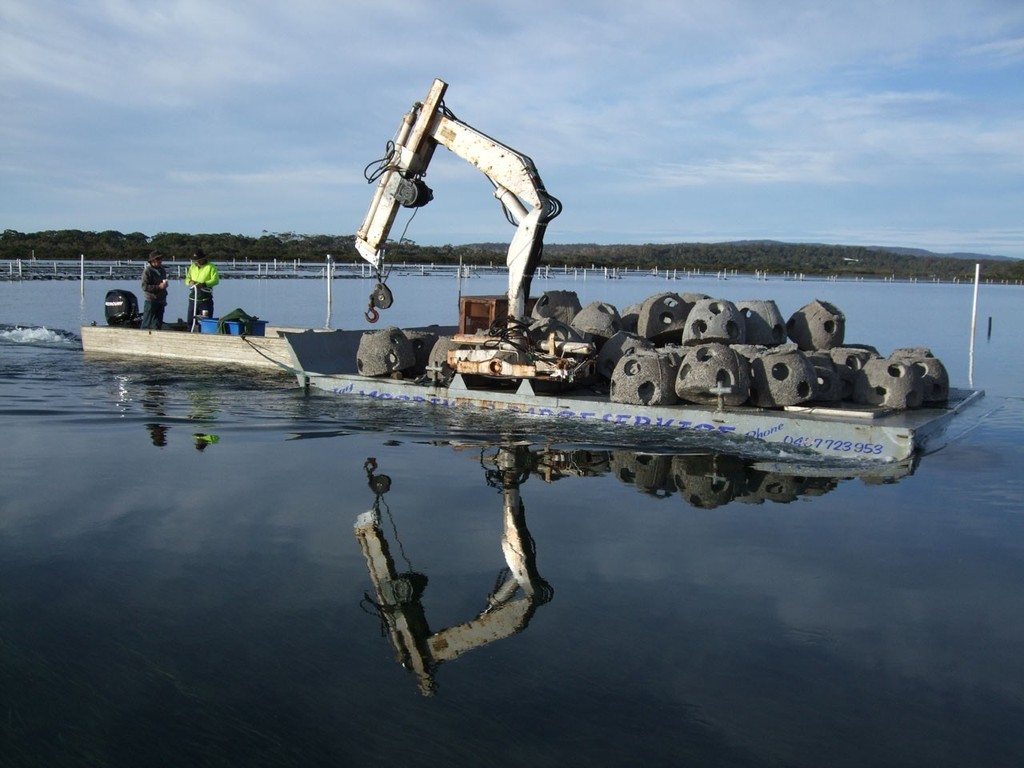WA's Department of Fisheries investigating artificial reefs
by Department of Fisheries-Western Australia on 11 Dec 2010

Reef balls being laid in Merimbula Lake on the Australian east coast NSW DPI .
www.dpi.nsw.gov.au/
Department of Fisheries has been investigating whether artificial reefs can be structures for sustainability and biodiversity, in Western Australia’s marine environment.
CEO Stuart Smith said artificial reefs have been deployed in other Australian states and other countries, to improve the recreational fishing experience and a recent visit to Korea and China had proved invaluable for a WA fishing delegation.
'The delegation included marine science experts, recreational fishing representatives and fisheries managers, who looked at the latest developments in reef technology, design and function, to examine potential impacts for eco-systems and fish production,' Mr Smith said.
'North Asian countries, such as Korea, China and Japan have been at the forefront of research into artificial reef research, construction and deployment over the past four decades. Artificial reefs offer another potential tool for Western Australia, to help manage pressure on various fisheries and especially those in high population areas around the State.'
Mr Smith said there was a strong appetite amongst recreational fishers, to trial artificial reefs and gain expertise in their deployment.
'The latest artificial reefs are purpose built for specific outcomes, such as improved biodiversity and the increased production of particular species,' he said.
'These artificial reefs are different to other structures (like scuttled vessels) that provide some benefits, but can act more as devices to aggregate fish, without significantly enhancing the stock carrying capacity of a habitat area.
'Artificial reefs can be constructed to any shape and size, usually adopting concrete structures for relatively shallow waters and steel in deeper areas, typically around two metres by two metres by three metres in size and deployed in an array over at least 800 square metres.
'Other tools such as fish stocking can also be employed with artificial reefs to further enhance the fishing experience.'
Mr Smith said deployment of artificial reefs in WA would not proceed, until suitable sites were selected, community consultation was carried out and regulatory approvals could be completed.
'This process is expected to take at least two years, as any approvals will need to include environmental baseline surveys and impact assessments, together with analysis of the likely community and economic impacts,' the CEO said.
More details on artificial reefs and the study tour report are available at www.fish.wa.gov.au.
If you want to link to this article then please use this URL: www.sail-world.com/77945